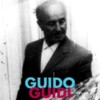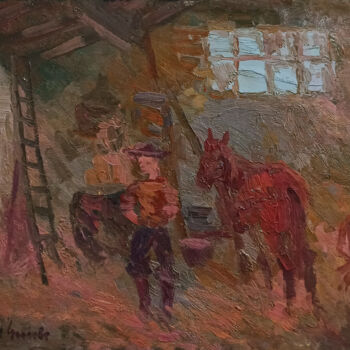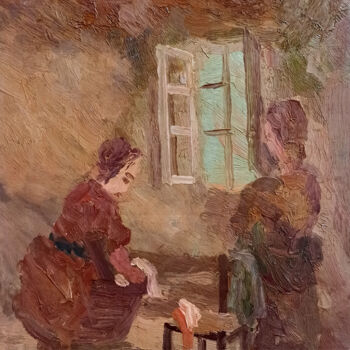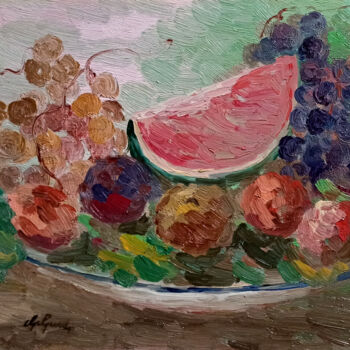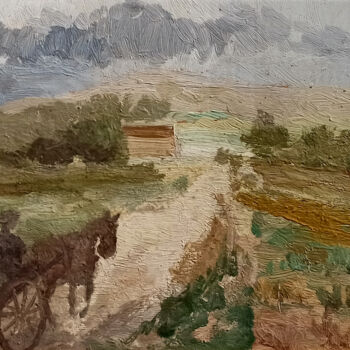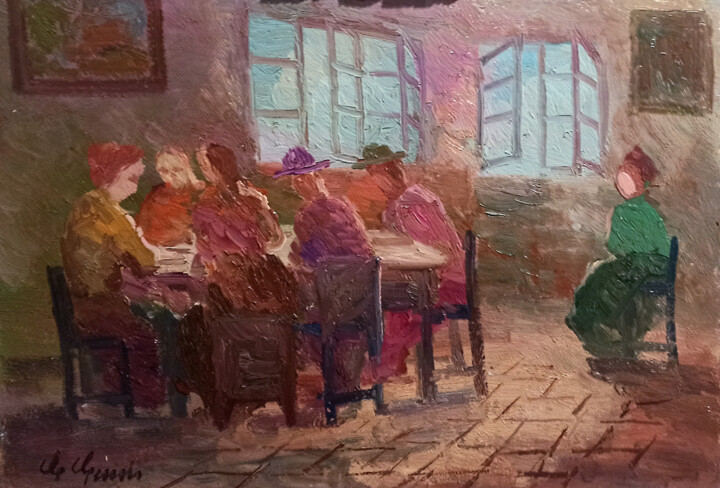
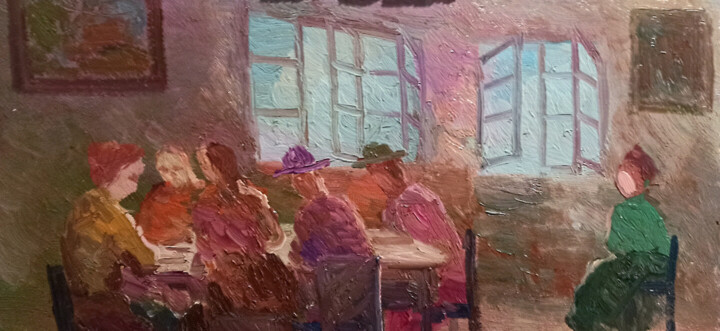
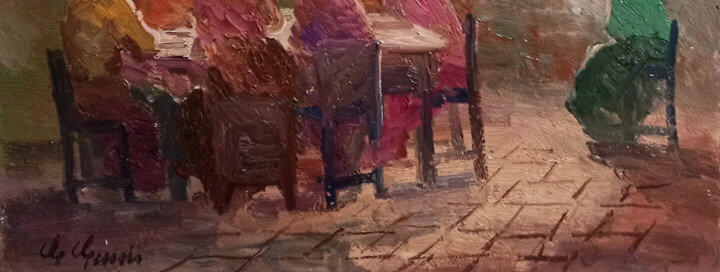
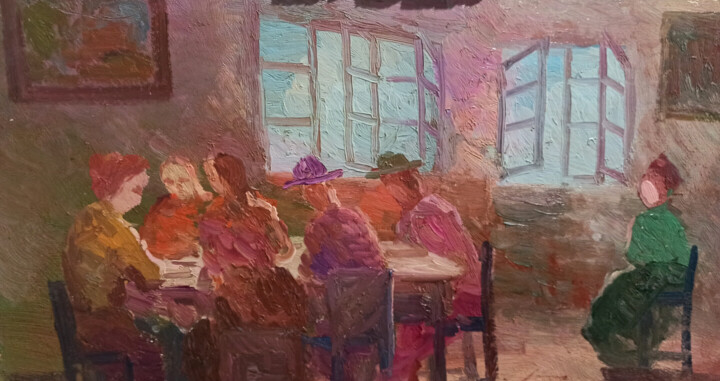
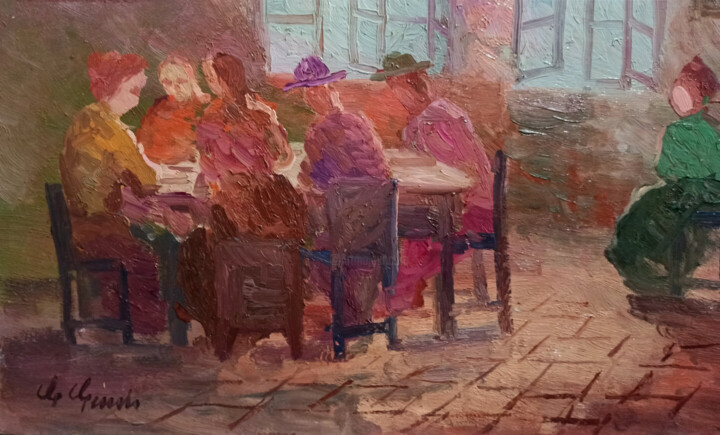
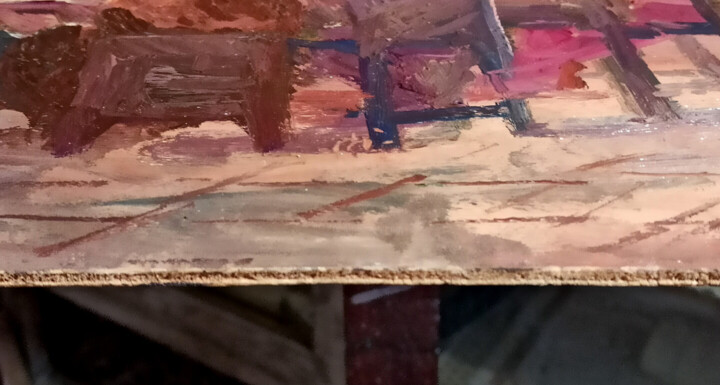
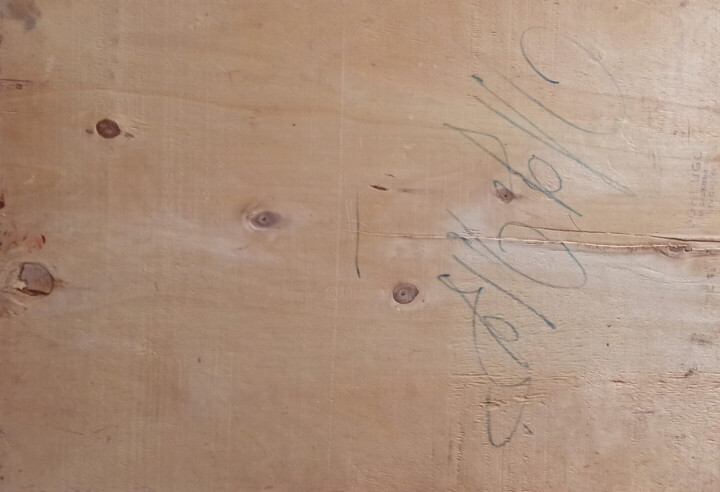
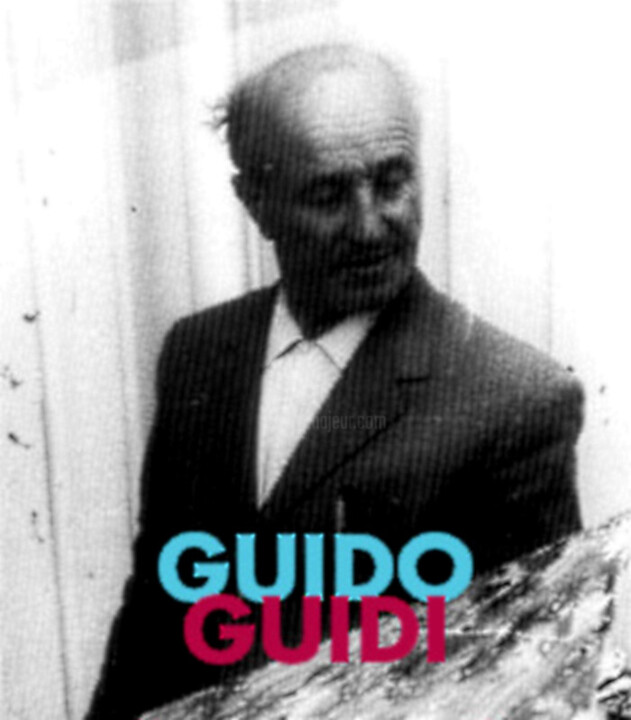


Fateci sapere se volete vedere altre foto di questa opera d'arte!
- Retro del lavoro / Lato del lavoro
- Dettagli / Firma / Superficie o struttura dell'opera d'arte
- Opera d'arte in situazione, Altro...
Family catch ups - Italian old painting (1970) Pittura da Guido Guidi
Maggiori informazioni
- Confezione (Imballaggio in scatola o cartone) Tutte le opere sono spedite con cura protetta e assicurata, con un vettore premium.
- Controllo Controlla il tuo ordine fino alla consegna al compratore. Verrà fornito un numero di tracking per seguire la spedizione in tempo reale.
- Scadenza La maggior parte dei pacchi viene consegnata in tutto il mondo entro 1-3 settimane (Stima)
- Dogana non inclusa Il prezzo non include le tasse doganali. La maggior parte dei paesi non ha tasse di importazione per le opere d'arte originali, ma potresti dover pagare l'IVA ridotta. Le tasse doganali (se presenti) devono essere calcolate all'arrivo dall'ufficio doganale e saranno fatturate separatamente dal vettore.
Maggiori informazioni
- Certificato di autenticità online tracciabile I certificati di autenticità possono essere verificati online in qualsiasi momento scansionando il codice dell'opera d'arte.
- Certificato di quotazione d'artista Gli esperti studiano il lavoro e la carriera di un artista. In seguito stabiliscono un valore medio, in modo indipendente e affidabile, del prezzo. Il valore medio dei prezzi colloca l'artista in una fascia di prezzo per un determinato periodo. Gli esperti possono essere invitati a stabilire una stima più precisa per un'opera in particolare.
Maggiori informazioni
Pagamento sicuro al 100% con certificato SSL + 3D Secure.
Maggiori informazioni
-
Opera d'arte originale (One Of A Kind)
Pittura,
Olio
su Legno
- Dimensioni Altezza 13,8in, Larghezza 19,7in
- Condizioni dell'opera d'arte L'opera è in ottime condizioni
- Incorniciatura Questa opera d'arte non è incorniciata
- Categorie Quadri sotto i 500 USD Surrealismo Vita di ogni giorno
Original impressionist old painting of Italian painter Gino Guidi ( Livorno 1914 - 2000 ) - PostMacchiaioli surrealism School
Guidi's paintings must have an authentication, we will send our certificate in accordance with the law, stamped and signed
Medium : oil on wooden hardboard - 70s in good condition no restoration necessary
Title or subject : " Family catch ups - life in the past "
Measures painting : 35 x 50 cm - 13.7 x 19.6 inches - frame not included
The painting will be polished with "DAMAR" transparent varnish for protection and brilliance of the colours
Shipping by Fedex or DHL express from Italy
For any information we are at your disposition
GUIDO GUIDI
Guido Guidi (1901-1998) was born in Livorno, generally indicated as a link between the great Macchiaioli and subsequent generations. From an early age he demonstrated a certain predisposition for drawing, through which he established his own observations regarding shapes and colors, also showing a certain manual skill.
After completing his studies at primary school, in 1912 he enrolled at the Institute of Arts and Crafts, which he attended only for a short time, as he was soon called back to work as a cobbler by the family's serious economic conditions. Following this experience he decided to open his own shop in 1916, in the midst of the First World War, and in fact, he was called up to arms with the III Cavalry Regiment in Ferrara already in 1919. Despite the work to improve his own economic conditions and family members, he continued to exercise his passion for drawing through life studies. Even the war events did not stop his desire to experiment and from these years some scenes of military life remained, which later also returned in his painting, to testify how the artist lived this period intensely and how certain events remained imprinted in his memory.
In 1924 he exhibited his paintings in public for the first time in a collective exhibition called Cenacolo degli Illustri near Florence while, in 1927, the year of his marriage, he exhibited at Bottega d'Arte in Livorno with his first personal exhibition and linked his art for some time to his brother-in-law Galliano Masini, already an established tenor, who as an enlightened patron purchased his entire production, thus also alleviating the artist's psychological suffering.
Unfortunately, despite some exhibition successes and recognitions, such as the purchase of one of his paintings by the Royal House in 1936, the artist was never abandoned by a certain mental illness, also due to the end of his association with Masini, which forced him to frequent hospitalizations in Volterra and Pisa. This condition of economic and above all internal instability led to a move away from painting, coinciding precisely with the Second World War.
He enthusiastically resumed his activity at the end of the 1940s and 1955 marked his great return through an exhibition for the Rassegna di Arte Popolare in Rome, followed by another exhibition at the Bottega d'Arte in Livorno, in 1956, which was repeated in 1959. In 1961 he was also present in Florence at the Galleria Cancelli, as a member of the Labronico Group.
After several years spent practically in isolation, in close contact only with his own palette, the artist quickly found himself in contention among the most important Italian gallery owners and collectors who, struck by his very personal way of painting, invaded his studio. .
Thus began a period of intense exhibition activity for Guidi, which led him to visit all the most important Italian cities, through the largest artistic events of the Italian post-war period.
A recurring stop was for the artist in Livorno, where, in 1966, he held an anthological exhibition organized by the Municipality at the Casa della Cultura, which consecrated him among the greatest Labronian painters of the twentieth century, giving definitive recognition to his art.
In the Seventies his participations continued, both in large international events, such as the Biennial of European Contemporary Art, held in Athens in 1972, and in the most important Italian galleries.
In 1984, as further confirmation of the popularity and success achieved, a monograph was published by Matteoni Editori of Lucca, edited by Piero Caprile, Elio Mercuri and Adolfo Tucci. The last exhibitions were held at the Athena Gallery in Livorno, in 1996, and at the Giardino dell'Arte of Montenero, in 1997.
Guidi passed away in 1998 and his memory was immediately celebrated through a series of retrospectives dedicated to the person and the artist.
Guidi's art is born from his own, spontaneous need, which starts from his interiority. He is part of the group of artists who grew up developing their self-taught skills, living a little on the margins, but this must not be seen as something reductive for the artist, on the contrary, if he had not lived an experience of this type his art would certainly have had different developments and perhaps it would not have been free from external conditioning as it was. He was able to give free rein to his own interiority, to his own feelings, without using languages already used by others. Guidi constructs the shapes and figures through rapid, almost summary brushstrokes, blurring the contours of the subjects represented. The colour, always bright and lively, dominates, but never goes so far as to cancel out the figures portrayed. His painting is spontaneous, free, it does not follow a predetermined evolutionary path, it draws inspiration from everyday life, the forms and situations are recognizable by everyone. Through his canvases he is able to lower the observer into a space that seems to take him into an almost dreamlike dimension, perhaps precisely the result of his brushstrokes, his colours, the diffused brightness, which also remains linked to contexts and spaces which are those typical of the reality known and recognizable by all, which however appears here in an unexpected dimension.
Temi correlati
Guido GuidiItalianItalian PaintingQuadro MacchiaioloDipinto Macchiaiolo
Guido Guidi (1901-1998) è nato a Livorno ed è ampiamente considerato come la figura di collegamento tra i pittori Macchioli e la generazione successiva. Fin da giovane Guidi mostrò una naturale inclinazione verso l'arte e nel 1912 si iscrisse alla scuola d'arte. Tuttavia, a causa di difficoltà finanziarie, fu costretto a partire dopo solo pochi mesi per mantenere la sua famiglia.
Nonostante le sfide, Guidi ha continuato a perseguire la sua passione per l'arte mentre lavorava per sostenere la sua famiglia. Anche durante la guerra, continuò a sperimentare la sua espressione artistica, catturando scene militari che avrebbero poi influenzato i suoi dipinti.
La prima mostra pubblica di Guidi avvenne nel 1924 al "Cenacolo degli illustri" di Firenze. Nel 1927 tiene una mostra personale alla Bottega d'arte di Livorno, con il sostegno del cognato Giuliano Masini, che acquistò molte sue opere. Tuttavia, la vita di Guidi fu segnata da lotte psicologiche aggravate dalla fine della sua amicizia con Masini, che portarono a periodi di cura a Volterra e Pisa.
Nonostante le battute d'arresto, Guidi conobbe una rinascita alla fine degli anni Quaranta. Il suo ritorno si consolidò con mostre a Roma, Livorno e Firenze negli anni Cinquanta e all'inizio degli anni Sessanta. Nonostante anni di isolamento, lo stile unico di Guidi ha attirato l'attenzione di importanti mercanti d'arte e collezionisti di tutta Italia.
Livorno rimase significativa per Guidi, culminando in una mostra retrospettiva organizzata dal Comune nel 1966 presso la Casa della Cultura, offrendo un riconoscimento finale della sua eredità artistica.
La vita e l'opera di Guido Guidi esemplificano resilienza e determinazione, superando le avversità per lasciare un segno indelebile nella scena artistica italiana.
-
Nazionalità:
ITALIA

- Data di nascita : 1901
- Domini artistici: Rappresentata da una galleria,
- Gruppi: Artisti Italiani Contemporanei Artisti presentati da una galleria

















